In Chapter 11 of Russia a History, Freeze compares Stalin and the Nazi’s rise to power. This was a compelling observation to me so I looked into “The Cult of Personality” in Seventeen Moments which describes this as “a situation in which a public figure (such as a political leader) is deliberately presented to the people of a country as a great person who should be admired and loved.” [1]
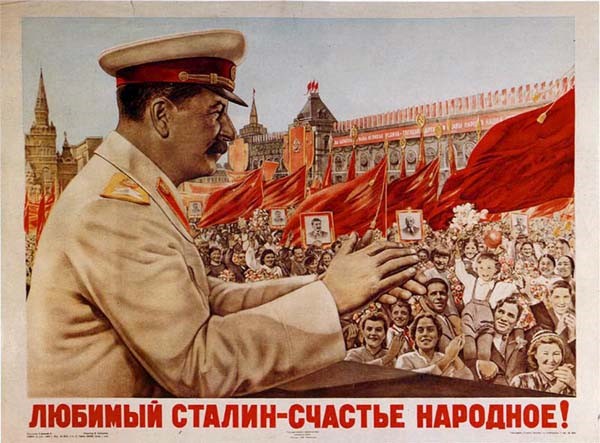
Beloved Stalin-People’s Happiness! portrays Stalin as a respectable, well-liked leader. When Russians put their trust in Stalin, they remain happy and united. “The idealized figure of Stalin represented in mass culture also spoke to a perceived need for vigorous leadership in Soviet society. Thus Stalin often appeared in a magnetic aura of charisma that went far beyond his political role, leaving many of the Soviet citizens lucky enough to meet him mesmerized.” [2]
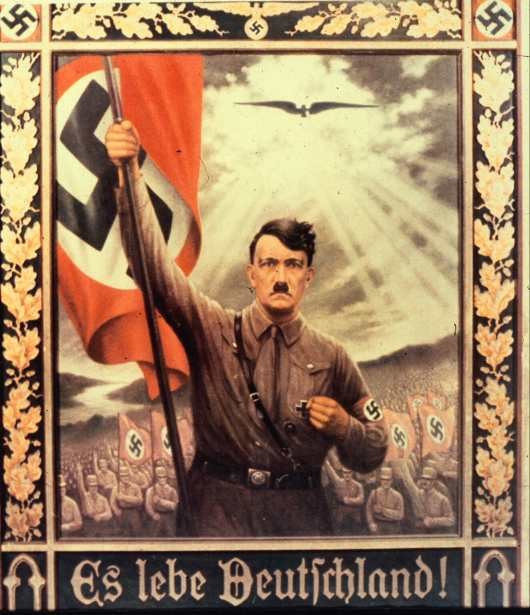
Hitler was similarly able to gather the masses and was also well known as a powerful, charismatic head of state. “Fascism typically evolves in countries that have experienced overwhelming crisis and victimization with the desire for communal purification and a strong, charismatic leader who manifests the group’s destiny.” [3] Like Stalin, Nazi propaganda focused on centralized leadership and national unity.
Stalin also manipulated his public image by having books rewritten to depict him more favorably and had cities named after him. Like in Nazi Germany, the Communist party attempted to portray their leader as God-like and capable of saving the nation. Both groups exploited ‘enemies of the state’ by use of propaganda mediums such as film, radio, newspaper, posters, and art. While Nazi Germany used the failure of the Weimar Republic to gather support, Stalin glorified the Communist Revolution to bring together socialist patronage.
Interestingly, both groups also focused propaganda on children. The Hitler Youth program and Stalin concentrated on the belief that their parties and future stability depended on the education of each nation’s children.
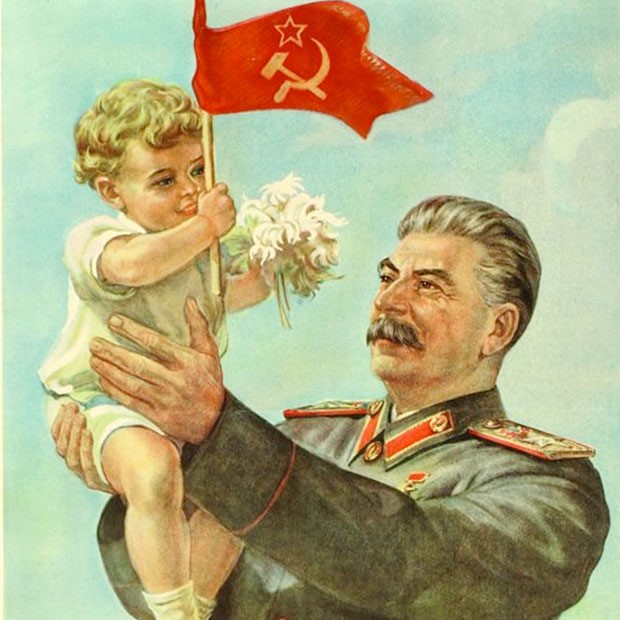
What other connections do you make between Stalinism and Nazism? Why would this later be ironic? What similarities do you see in their propaganda techniques? What are other similarities in these regimes? Is it a coincidence both men rose to power in the 1930s?
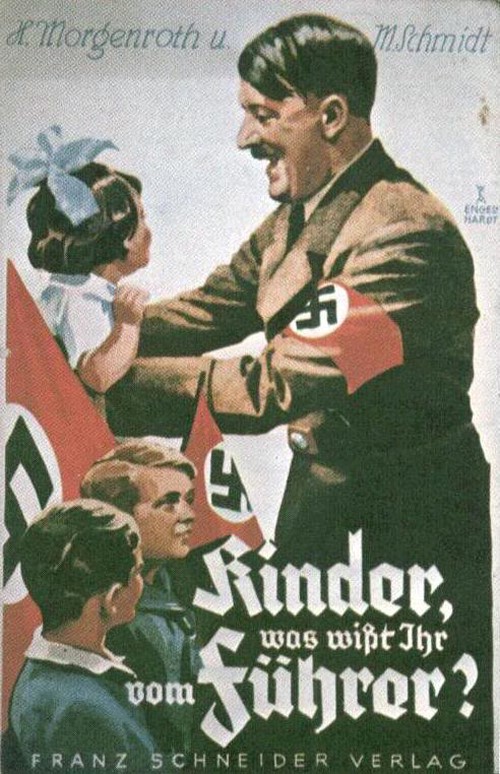
Sources:
[1] “Cult Of Personality | Definition of Cult Of Personality by Merriam-Webster.” Dictionary and Thesaurus | Merriam-Webster. Accessed March 12, 2017. https://www.merriamwebster.com/dictionary/cult%20of%20personality.
[2] “Cult of Personality.” Seventeen Moments in Soviet History. Accessed March 12, 2017. http://soviethistory.msu.edu/1939-2/cult-of-personality/.
[3] Robert O. Paxton, The Anatomy of Fascism (New York: Vintage Books), 219.
All posters are from Google Images
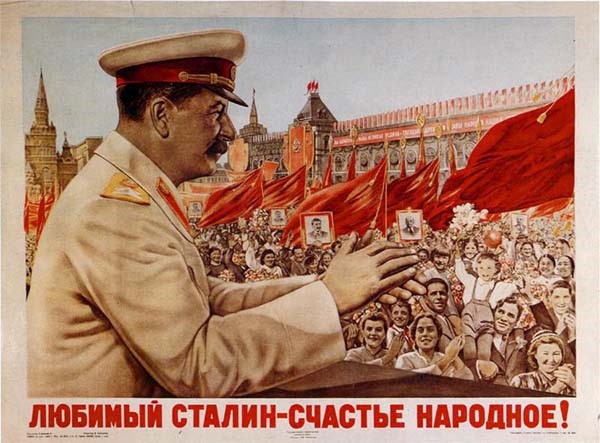
Stalin and Hitler were extremely similar in many ways and I think you did a good job of highlighting that. You found some great images that cover several “cult of personality” aspects that are shared between the two. Well done.
LikeLike
I really enjoyed the images you chose to include in your post because they show a side to these two men that, because of history, we know not to be their true nature. Additionally, I really like how you spoke on propaganda the two sides used including film, music, and posters and if you want a more in depth look at how these were used to promote patriotism specifically within the Soviet Union, you can check out my blog.
LikeLiked by 1 person
yes, check out Max’s post!
LikeLike
This is a great piece. You did awesome comparing the two charismatic leaders. The images really showed in influence of media and propaganda in perpetuating both leaders agendas. The images of both Hilter and Stalin with babies is similar to the American stereotype of politicians “kissing babies”.
LikeLike
I think this is an awesome post! Both are similar in how they came to power and their ability to garner mass support. I also think the pictures with the children made it look as if both leaders were taking great care of the future generations which must have made them both look really appealing. Great job!
LikeLike
I really enjoyed the similarities you drew in both the media they were depicted in and in their actions taken during their rule. I think the similarities are certainly very obvious, this was a war between two very different ideologies, but at the front and center was the glorification of a ‘great leader’ who could unite the nation.
LikeLike
This is an awesome post! The comparison of two of the most reviled figures in history was really interesting, seeing how they were able to get such a following despite the atrocities they committed. I found the focus on children really interesting, and I feel like Stalin was more concerned with his eternal image– he rewrote history books and also seemed to try and portray himself as a caring leader.
LikeLike
The patriarchal authoritarian with the cute kid is definitely a powerful trope! Lots of insight here — and GREAT posters. Could you tell me more about how Hitler and Stalin differed? This has more to do with the nature of the regimes they developed than personality or leadership style, although there’s some of that too. (check back on the footnote links – they seem to loop back to the post itself?)
LikeLike
I think it is really interesting how two men came to power and both used similar techniques to solidify power both in the long and short term. Great Posters! They both created ‘enemies of the people’ to create a sense of a common enemy in order to unite the people behind them to combat this ‘threat’.
LikeLike
Very interesting to see the parallels between these two! Their brand of authoritarianism really thrived off the in-group versus out-group mentality. I find it very interesting how a cult of personality came to rise in communist states backed by the USSR.
LikeLike
Such an interesting comparison. It’s very easy to see how these two authoritarian leaders are similar. Seeing how both of them unified their countries into a single cause is incredible, I especially liked your comment of how leaders like this are brought about through a crisis in the country.
LikeLike
I like that you compared both figures instead of just talking about one head of state. You highlighted great points on how the two are similar (even though they hated each other). Great post! It was very interesting to read.
LikeLike